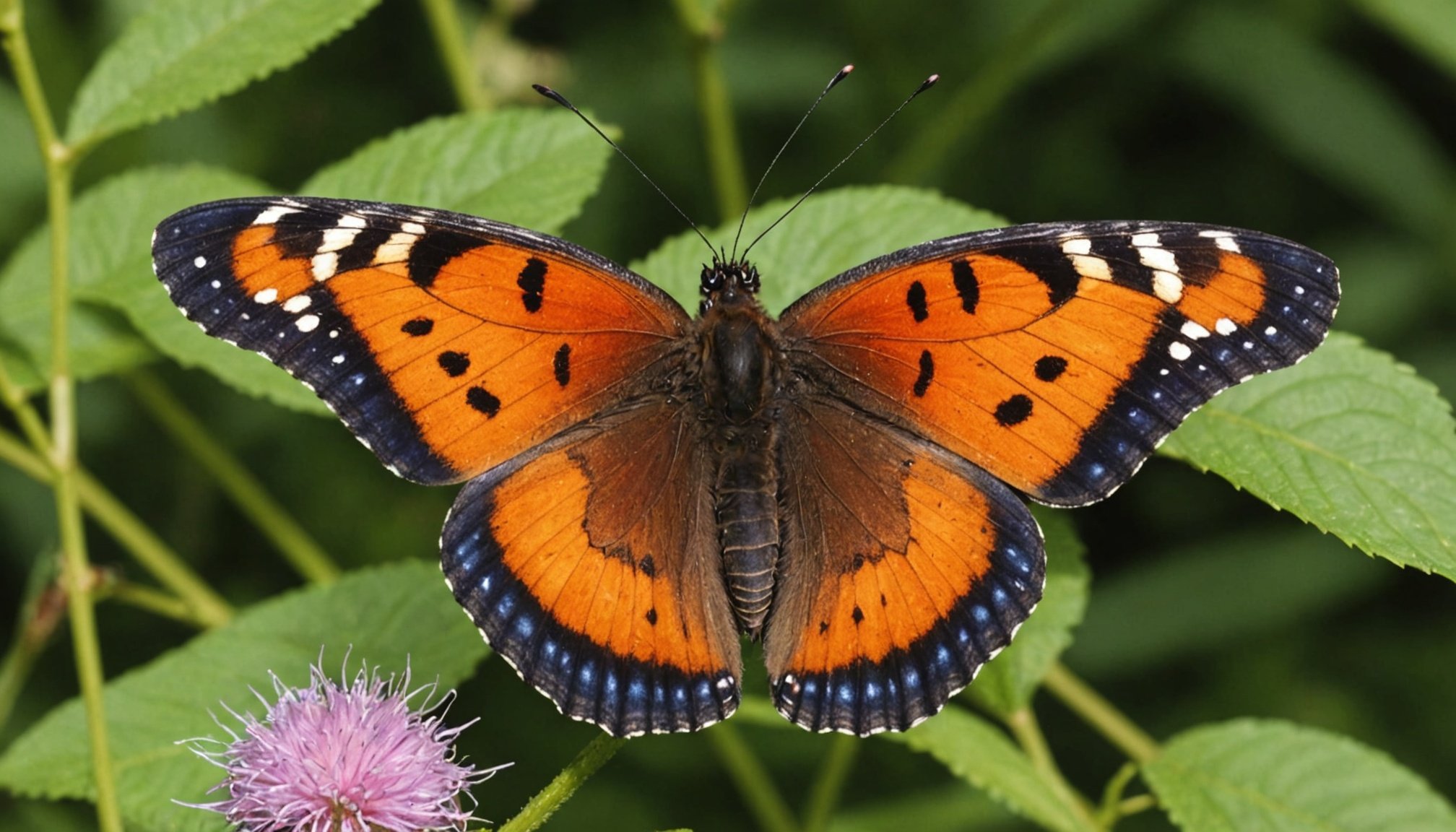The UK is home to some of the world's most enchanting butterfly sanctuaries, where dedicated conservation efforts are making a difference. These sanctuaries are not just beautiful; they serve as vital lifelines for endangered species facing habitat loss and climate change. Discover how these pioneering initiatives are transforming landscapes and nurturing butterfly populations. Learn about their innovative practices and the inspiring individuals behind these movements, unlocking solutions that could shape the future of biodiversity in the UK. Dive into the vibrant world of butterflies and the commitment to ensuring their survival.
Overview of Butterfly Sanctuaries in the UK
Butterfly sanctuaries are dedicated areas where butterflies are protected and nurtured. These sanctuaries aim to conserve various species by providing a habitat that supports their life cycle. The purpose of these sanctuaries is to ensure that butterflies can thrive in a safe environment, free from threats like habitat destruction and climate change.
Avez-vous vu cela : Identifying Illness in UK Garden Birds: Key Symptoms and Essential Action Steps
In the UK, butterfly conservation is crucial for maintaining biodiversity. Butterflies are important pollinators and serve as indicators of a healthy ecosystem. Their presence often signifies the well-being of other species and the environment as a whole. UK conservation efforts focus on protecting these delicate creatures by establishing sanctuaries and promoting public awareness.
The current state of butterfly populations in the UK reflects a mixed picture. While some species are thriving, others face significant challenges due to habitat loss and environmental changes. Conservationists work tirelessly to monitor populations and implement strategies to support struggling species.
A découvrir également : Balancing Nature and Visitors: UK National Parks” Innovative Strategies for Wildlife Protection Amidst Rising Tourism
By visiting butterfly sanctuaries, individuals can learn about the importance of conservation and how to contribute to these efforts. Supporting such initiatives helps ensure that butterflies continue to grace the UK's landscapes, enriching the natural world with their beauty and ecological contributions.
Notable Butterfly Sanctuaries
Exploring the UK's butterfly sanctuaries offers a glimpse into the country's dedication to biodiversity. These top conservation sites play a vital role in protecting various butterfly species. Here's a look at some notable sanctuaries:
Key Sanctuaries and Their Features
-
Butterfly World Project: Located in Hertfordshire, this sanctuary is renowned for its extensive collection of butterfly species and educational exhibits. It offers interactive experiences where visitors can learn about butterfly life cycles and conservation efforts.
-
Stratford Butterfly Farm: Situated in Warwickshire, this farm boasts a tropical environment, providing a unique habitat for hundreds of butterfly species. Its lush surroundings and informative displays make it a popular destination for families and nature enthusiasts.
-
The Butterfly House at Edinburgh Zoo: This sanctuary in Scotland is part of the larger zoo complex, offering a diverse range of butterflies from around the world. Its focus on education and conservation makes it a key player in the UK's efforts to protect these delicate insects.
Geographic Distribution
These sanctuaries are strategically distributed across the UK, ensuring accessibility for both locals and tourists. From the south in Hertfordshire to the north in Scotland, each sanctuary provides a unique experience, highlighting the UK's commitment to butterfly conservation.
Conservation Programs and Strategies
In the UK, conservation programs are vital for the survival of butterfly species. These programs focus on creating and maintaining environments where butterflies can thrive. One of the primary strategies is butterfly habitat restoration. This involves rehabilitating natural areas to support the life cycle of butterflies, ensuring they have access to essential resources like host plants and nectar sources.
Habitat restoration initiatives are significant because they address the root causes of butterfly population declines. By restoring native vegetation and removing invasive species, these initiatives create sustainable habitats that cater to the needs of various butterfly species. This not only helps in conserving butterflies but also enhances the overall ecosystem health.
Collaboration with local communities and organizations plays a crucial role in these conservation efforts. Engaging local residents in restoration projects fosters a sense of ownership and responsibility towards their natural surroundings. Moreover, partnerships with environmental organizations bring additional expertise and resources, amplifying the impact of conservation programs.
Conservation programs are not just about preserving butterflies; they are about nurturing a balanced ecosystem. Through strategic planning and community involvement, these programs ensure that butterfly populations can flourish, contributing to the UK's biodiversity and ecological resilience.
Success Stories in Endangered Species Rescue
Conservation efforts have led to remarkable success stories in rescuing endangered butterflies in the UK. These stories showcase the impact of targeted conservation interventions and their positive effects on local ecosystems.
One such success is the recovery of the Large Blue butterfly. Once extinct in the UK, this species has been reintroduced through meticulous habitat management and the reestablishment of its symbiotic relationship with red ants. By restoring the specific grassland environments required for its survival, conservationists have successfully increased its population.
Another notable example is the Duke of Burgundy butterfly. Through habitat restoration and careful monitoring, its numbers have shown a promising rebound. This butterfly's recovery is attributed to the management of scrubland and the planting of cowslip and primrose, essential for its lifecycle.
These success stories not only highlight the resilience of endangered butterflies but also underscore the importance of tailored conservation strategies. The positive impact on local ecosystems is evident, as the presence of these butterflies contributes to pollination and supports biodiversity.
Such achievements demonstrate the potential for reversing declines in butterfly populations. They inspire continued efforts to protect and nurture endangered species, ensuring their survival for future generations.
Scientific Research and Monitoring
Scientific research plays a pivotal role in butterfly conservation, particularly within sanctuaries. These protected areas serve as living laboratories where researchers conduct butterfly research to understand the complexities of butterfly life cycles, behaviours, and interactions with their environments. Such studies are crucial for developing effective conservation science strategies.
Research conducted in sanctuaries often focuses on monitoring butterfly populations and trends. This involves tracking species diversity, abundance, and distribution over time. By analysing these factors, scientists can identify potential threats and assess the health of butterfly populations. This data is invaluable for informing conservation practices and ensuring that efforts are targeted and efficient.
Moreover, sanctuaries provide a controlled environment where researchers can experiment with different habitat management techniques. This helps in understanding how changes in habitat affect butterfly populations, enabling the development of tailored conservation strategies.
The insights gained from these studies not only benefit the butterflies within the sanctuaries but also contribute to broader conservation efforts. By sharing findings with the global scientific community, researchers help shape policies and practices that protect butterflies worldwide. In this way, butterfly research in sanctuaries is essential for sustaining biodiversity and ecological balance.
Visitor Information and Experience
Visiting butterfly sanctuaries in the UK offers a unique opportunity to immerse oneself in the world of these enchanting creatures. Each sanctuary provides visitor guidelines to ensure a safe and enjoyable experience. It's recommended to check the sanctuary's official website or contact them directly for the latest information on opening hours and any specific requirements.
Educational programs and workshops are often available, offering visitors a chance to learn more about butterfly conservation. These programs might include guided tours, interactive exhibits, and hands-on activities designed to engage all age groups. Such educational experiences not only enrich visitors' understanding but also inspire them to contribute to conservation efforts.
Accessibility is a key consideration at these sanctuaries. Most offer facilities that cater to families and individuals with diverse needs. This includes wheelchair-accessible paths, family-friendly amenities, and designated picnic areas. Some sanctuaries even provide sensory-friendly experiences for those with specific requirements.
When planning a visit, consider the seasonal changes, as butterfly activity can vary throughout the year. By adhering to visitor guidelines and participating in educational offerings, guests can fully appreciate the vital role these sanctuaries play in preserving the UK's butterfly populations.
Community Engagement and Volunteer Opportunities
Participating in community involvement at butterfly sanctuaries is a rewarding way to support conservation efforts. These sanctuaries offer a range of volunteer opportunities catering to various interests and skills. Whether you're passionate about gardening, education, or research, there's a role for everyone.
Volunteers can engage in activities such as maintaining butterfly habitats, assisting with educational programs, or participating in citizen science projects. These roles are crucial for the upkeep of sanctuaries and the success of their conservation missions. By donating your time, you contribute to creating a sustainable environment for butterflies.
Community events are another avenue for involvement. Sanctuaries often host workshops, guided tours, and fundraising events to raise awareness and encourage public participation. These events foster a sense of community and allow individuals to learn more about butterfly conservation while connecting with like-minded enthusiasts.
Individuals can also support sanctuaries by spreading awareness about the importance of butterfly conservation. Sharing information on social media, participating in local conservation groups, or even creating butterfly-friendly spaces in your garden are impactful ways to contribute.
By engaging with these initiatives, you play a vital role in ensuring the future of butterfly populations and enhancing biodiversity in the UK.
Impact of Climate Change on Butterfly Populations
Climate change poses significant challenges to butterfly populations, affecting their survival and distribution. As temperatures rise and weather patterns shift, butterflies face altered habitats and disrupted life cycles. These changes can lead to mismatches between butterflies and their host plants, which are crucial for their development.
Butterfly sanctuaries are particularly vulnerable to climate-induced challenges. Extreme weather events, such as heatwaves and heavy rainfall, can damage habitats and reduce the availability of nectar sources. These conditions make it difficult for sanctuaries to maintain stable environments for butterflies, impacting their conservation efforts.
To combat these challenges, sanctuaries are implementing adaptation strategies. These include creating microhabitats that offer refuge during extreme conditions and planting diverse vegetation to ensure continuous food supply. By enhancing habitat resilience, sanctuaries aim to support butterfly populations in adapting to climate change.
Furthermore, research and monitoring efforts are crucial in understanding how climate change affects butterflies. By tracking changes in populations and behaviours, conservationists can develop targeted interventions. Engaging local communities in these initiatives fosters awareness and encourages proactive measures to mitigate climate impacts on butterflies. Through these strategies, sanctuaries strive to protect butterflies amidst the ongoing climate crisis.
Ways to Support Butterfly Conservation
Supporting butterfly conservation can be both fulfilling and impactful. There are numerous avenues for individuals to contribute to the preservation of these delicate creatures and their habitats.
Donations play a crucial role in sustaining local sanctuaries. Financial contributions help fund essential conservation projects, research, and the maintenance of habitats. Many sanctuaries offer membership programs, providing a more structured way to support their ongoing efforts. Members often receive exclusive updates and invitations to special events, fostering a deeper connection to the conservation community.
Beyond monetary contributions, advocacy and awareness are vital. Individuals can participate in campaigns to promote the importance of butterfly conservation. This can include sharing information on social media, participating in local conservation events, or even writing to policymakers to advocate for stronger environmental protections.
Creating butterfly-friendly spaces in your garden is another impactful way to support conservation. Planting native flowers and avoiding pesticides provide safe havens for butterflies to thrive.
By engaging in these initiatives, individuals not only support the immediate needs of sanctuaries but also contribute to a broader movement aimed at ensuring the survival of butterfly populations for future generations.
Future of Butterfly Conservation in the UK
The future of conservation in the UK is evolving with emerging trends and innovations aimed at ensuring butterfly sustainability. As technology advances, conservationists are incorporating cutting-edge tools to enhance their efforts. Drones and satellite imagery, for instance, are being used to monitor butterfly habitats and track changes in real-time, providing invaluable data for proactive conservation strategies.
Long-term goals for sanctuaries and conservation organizations include expanding protected areas and enhancing habitat connectivity. By creating corridors between fragmented habitats, butterflies can move freely, increasing their resilience to environmental changes. Additionally, fostering genetic diversity within butterfly populations is a priority to bolster their adaptability to future challenges.
Public awareness plays a crucial role in the future of butterfly conservation. Engaging communities through educational campaigns and citizen science initiatives can amplify conservation efforts. By involving the public in monitoring and reporting butterfly sightings, valuable data can be collected to inform conservation strategies.
Incorporating technology and raising public awareness are pivotal in the quest for butterfly sustainability. These efforts not only safeguard butterfly populations but also contribute to the broader goal of preserving biodiversity in the UK. As these initiatives progress, they promise a brighter future for butterflies and the ecosystems they inhabit.






